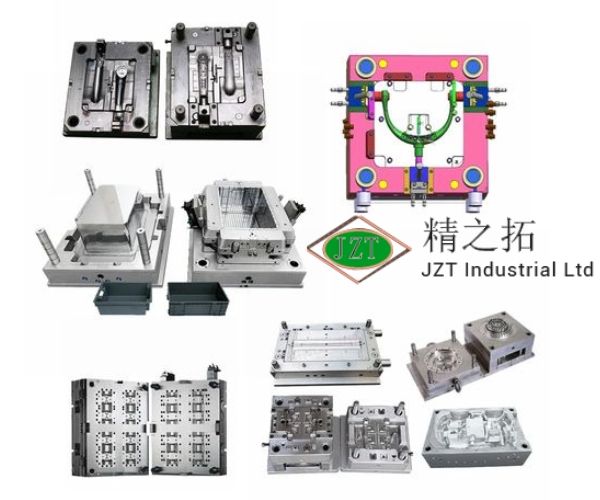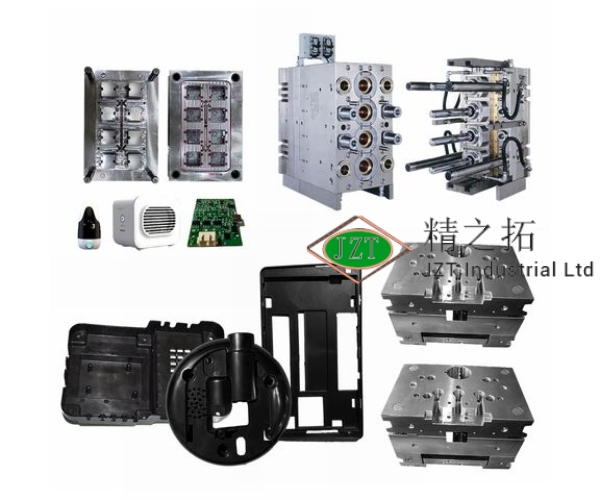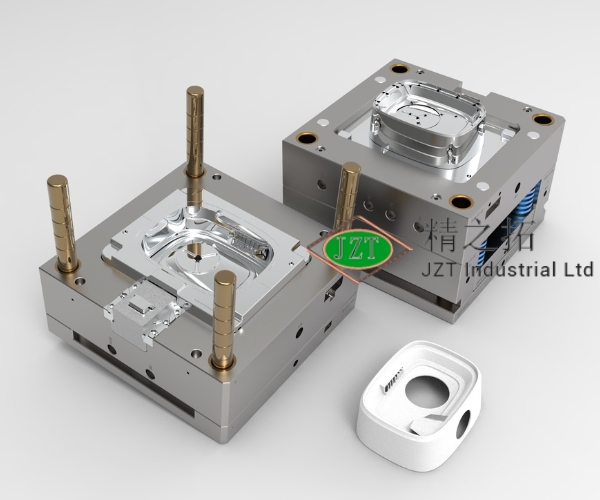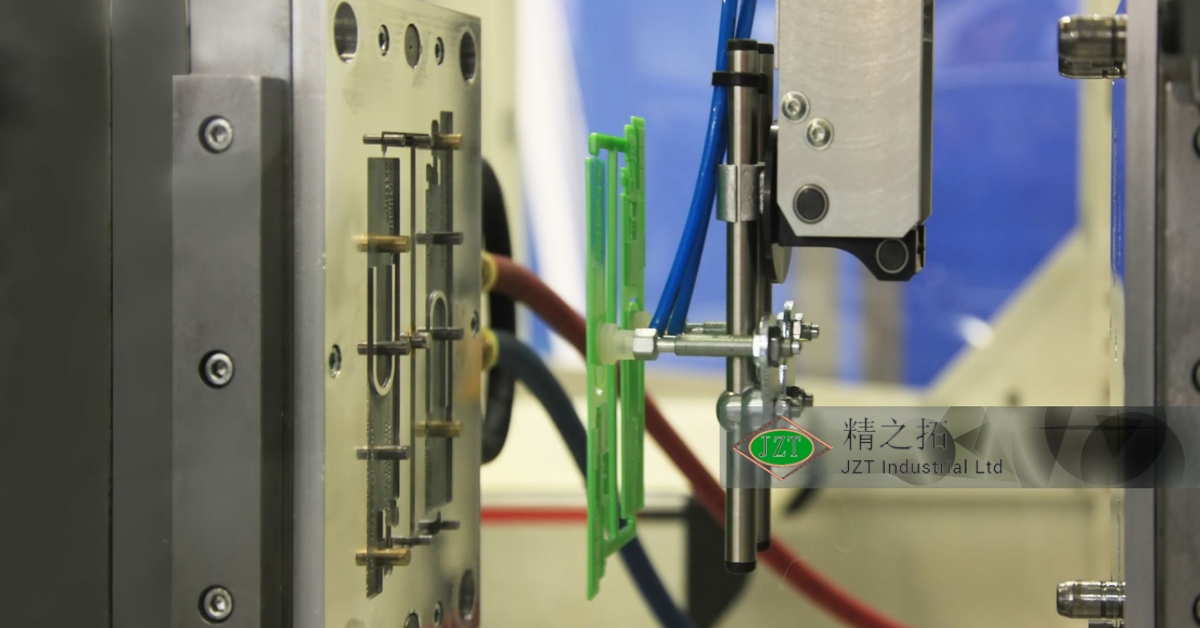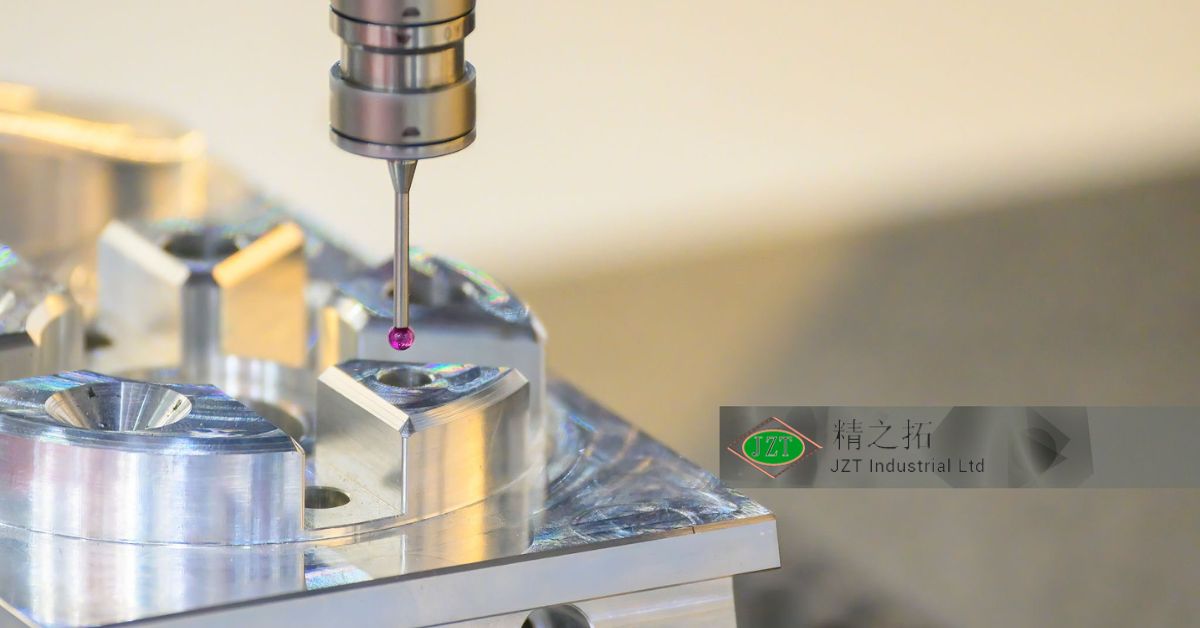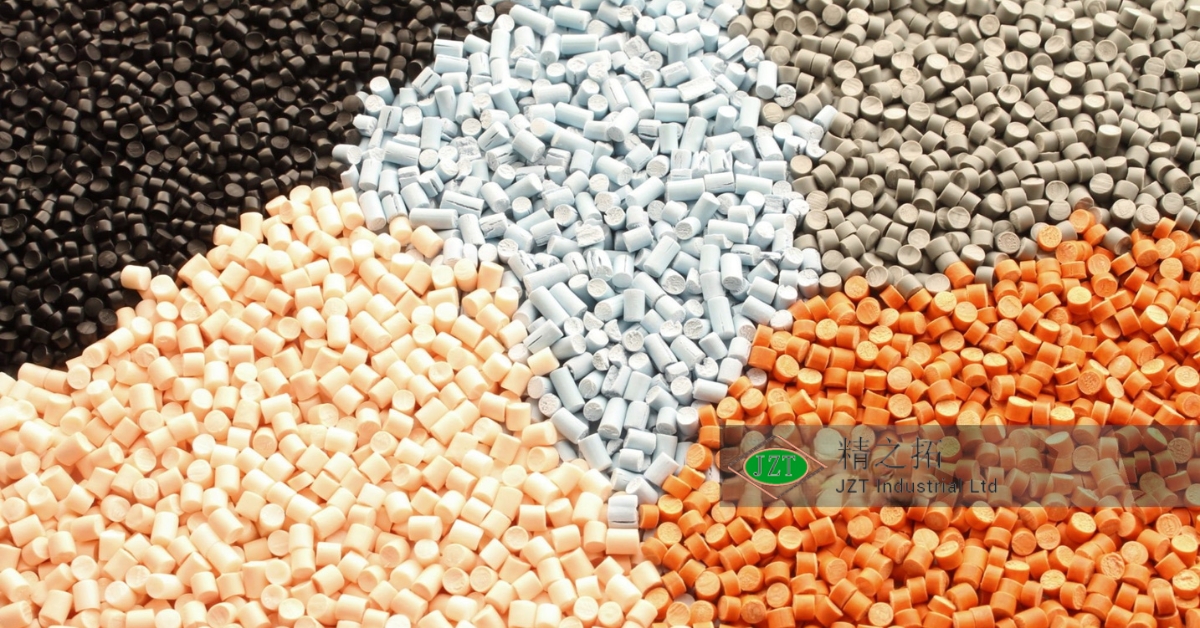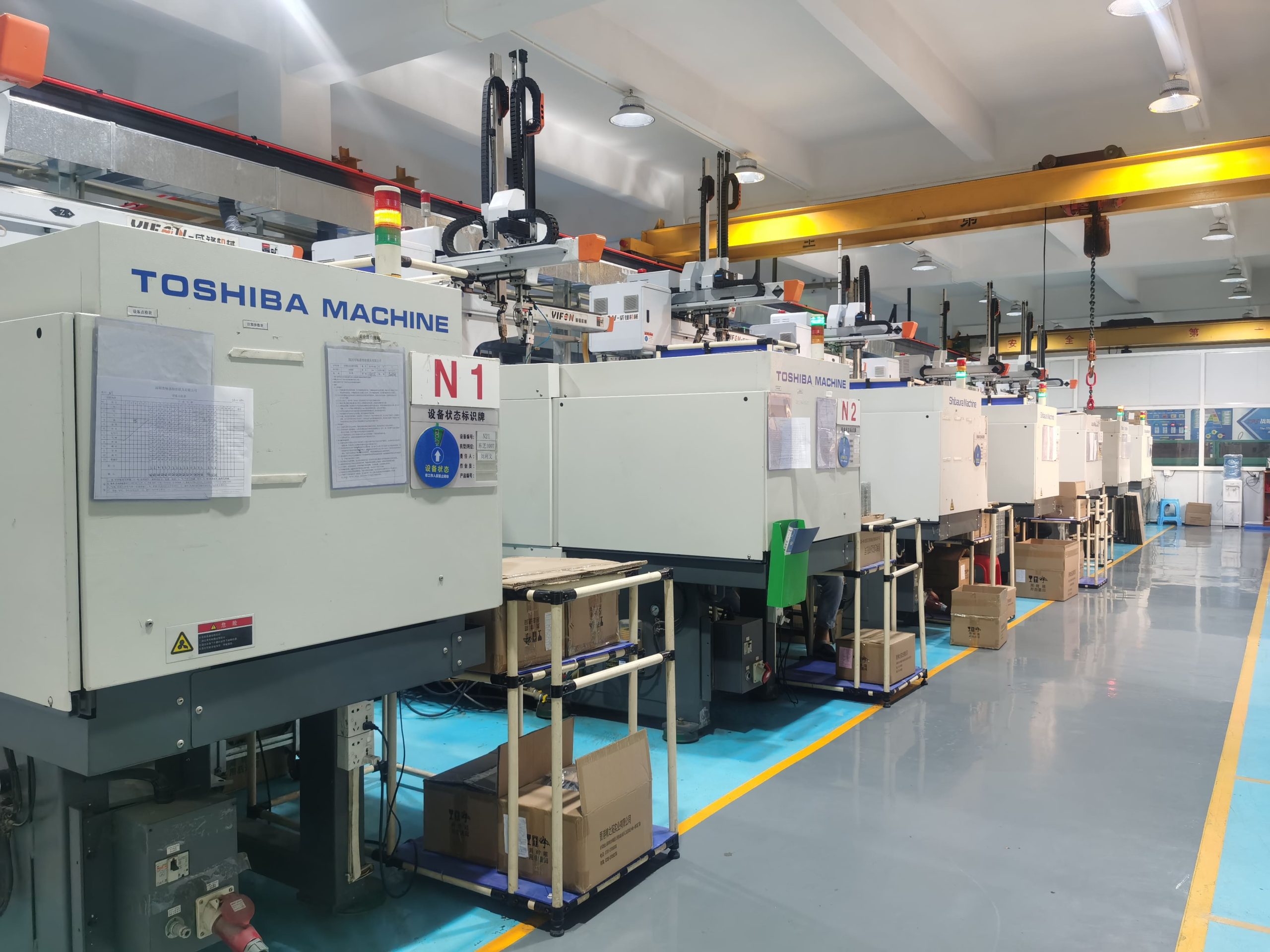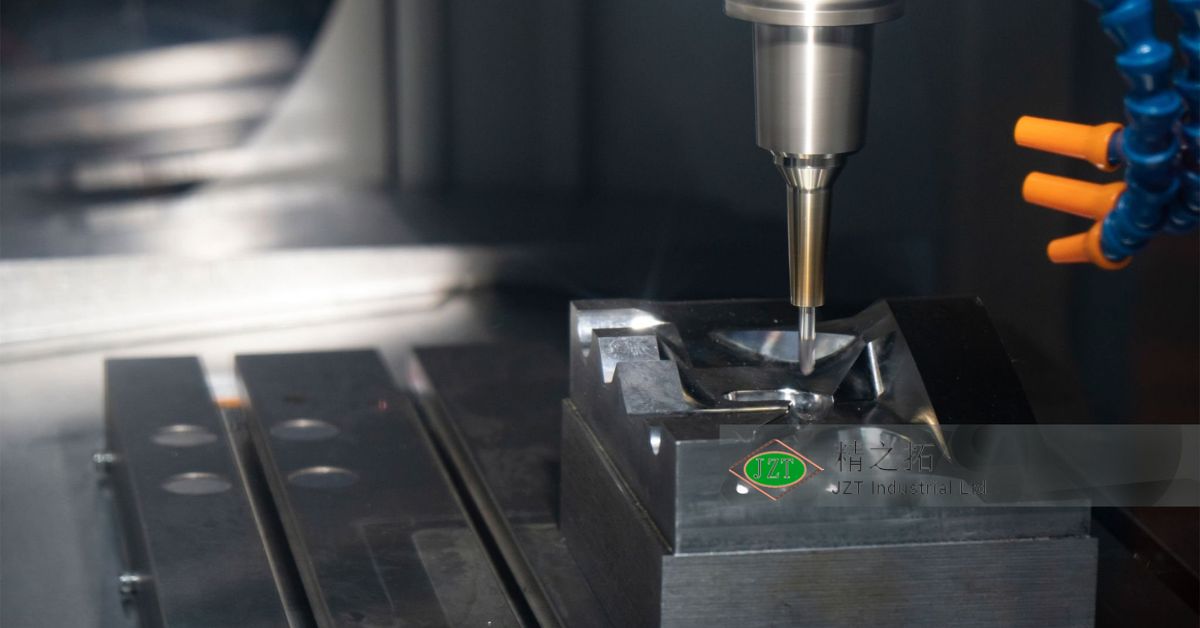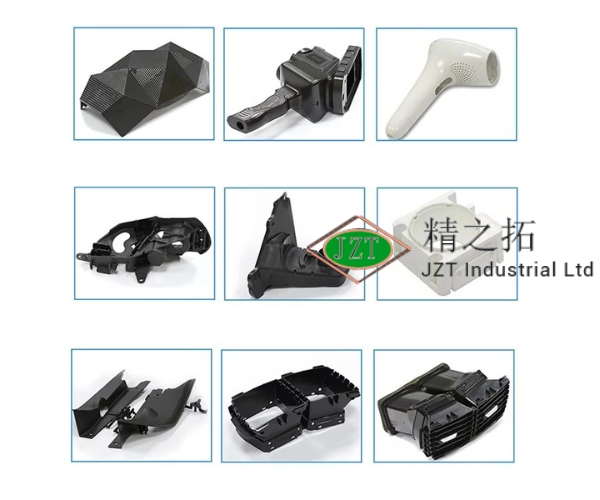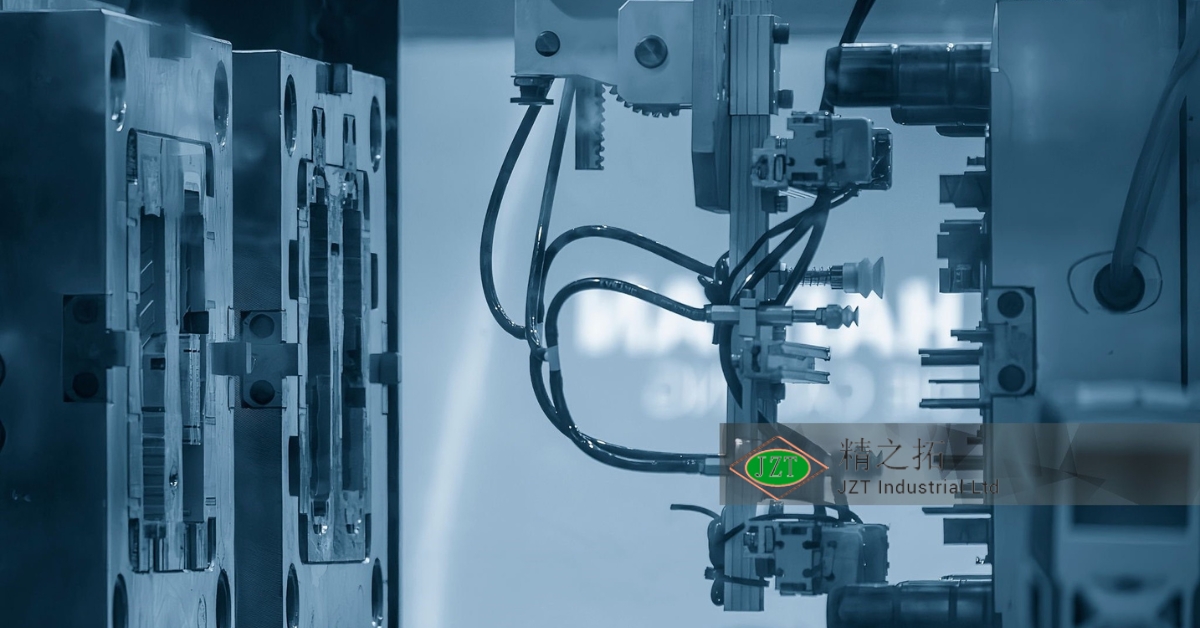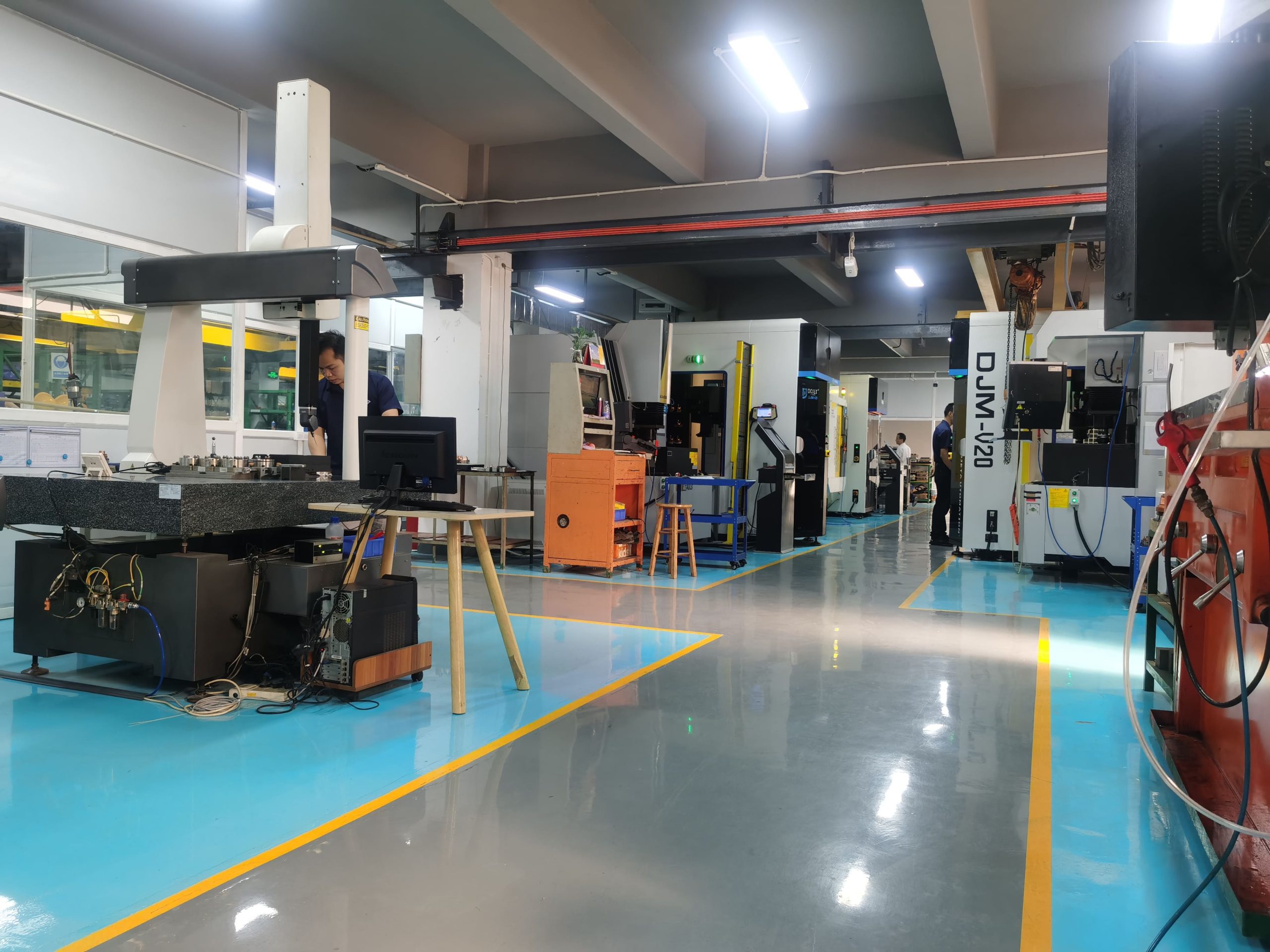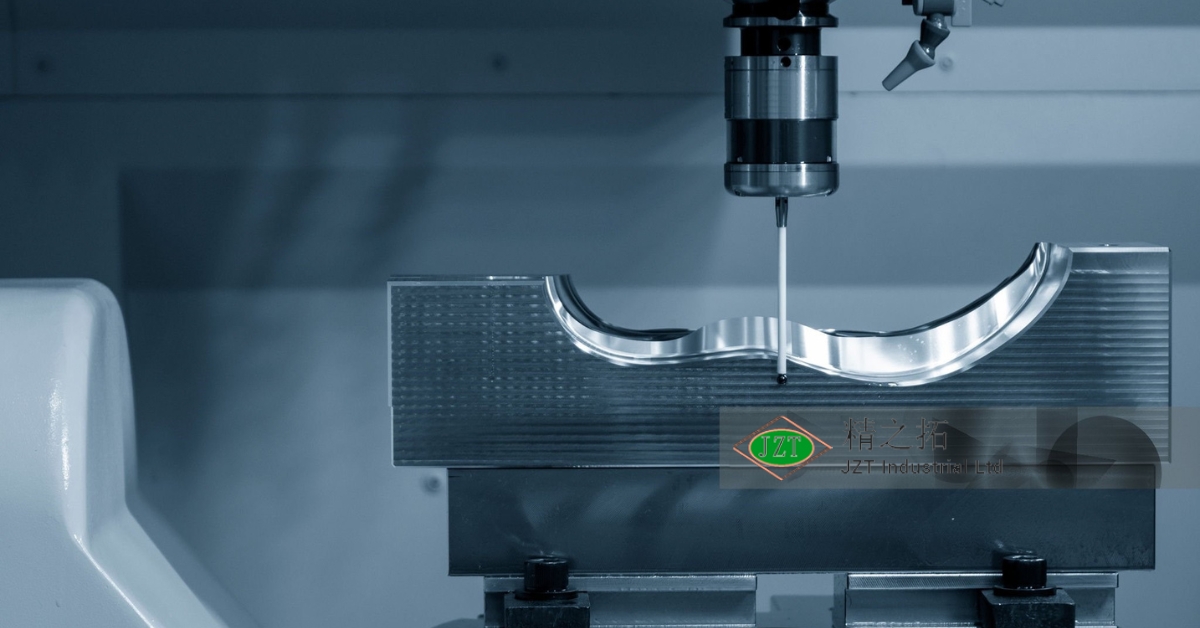導入
In today’s eco-conscious world, sustainable packaging has become more than just a trend—it’s a necessity. Environmental concerns, coupled with rising consumer demand for green products, have led manufacturers to explore alternative materials and production methods that prioritize sustainability. One of the most promising innovations in this space is injection molding. Known for its precision, efficiency, and compatibility with eco-friendly materials, injection molding is redefining what’s possible in sustainable packaging. By reducing waste, using biodegradable and recyclable plastics, and enabling designs that minimize material use, injection molding is meeting the sustainability demands of both companies and consumers.
This article explores how プラスチック射出成形金型 and the injection molding process itself are shaping a more sustainable future in the packaging industry. From material innovations to efficient production techniques, we’ll delve into how this manufacturing approach is making packaging greener without sacrificing quality, functionality, or aesthetic appeal.
Understanding Injection Molding in Packaging
Injection molding is a manufacturing process that has become foundational in creating complex, high-quality plastic products across industries. In packaging, injection molding offers specific advantages, including precision, scalability, and versatility, making it an ideal method for producing sustainable packaging solutions. Understanding the fundamentals of injection molding reveals why it’s particularly suited for the demands of sustainable packaging.
射出成形とは何ですか?
Injection molding involves injecting molten plastic into a metal mold under high pressure. Once the plastic cools and solidifies, the mold opens, and the part is ejected. This process is highly efficient, capable of producing identical parts with exact tolerances in a short amount of time. The precision of injection molding makes it perfect for packaging, where uniformity and accuracy are crucial. Injection molding can be used to create everything from durable containers and lids to thin, lightweight films used in protective packaging.
Common Materials Used in Injection Molded Packaging
One of the key reasons injection molding is transforming sustainable packaging is its compatibility with eco-friendly materials. Traditional packaging often uses single-use plastics like polyethylene and polystyrene, which are durable but non-biodegradable. In contrast, injection molding is compatible with a wide range of sustainable materials, including:
- Bioplastics: Materials like PLA (polylactic acid) and PHA (polyhydroxyalkanoates) are plant-based and biodegradable, making them ideal for compostable packaging.
- リサイクルプラスチック: Post-consumer recycled (PCR) plastics can be used in injection molding, reducing waste and giving plastics a second life in new products.
- Compostable Resins: Some plastics can be engineered to decompose in industrial composting facilities, making them suitable for sustainable packaging.
These materials allow manufacturers to create eco-friendly packaging solutions that meet consumer and regulatory demands for sustainability without sacrificing the durability and functionality expected from traditional plastic packaging.
Key Benefits of Injection Molding for Packaging
Injection molding offers several benefits that are particularly valuable for packaging manufacturers aiming to be more sustainable. The process is highly material-efficient, with very little waste produced during each molding cycle. Excess material, such as runners and sprues, can often be recycled and reused in future runs, further reducing waste. Injection molding also enables カスタムプラスチック部品 with intricate designs that require less material, such as thin-walled containers and lightweight packaging solutions, thereby reducing resource use and production costs.
Injection molding’s scalability and precision ensure that packaging can be produced quickly and consistently, allowing manufacturers to meet high demands while minimizing their environmental impact. These benefits have solidified injection molding’s role in the sustainable packaging industry, helping companies produce greener products efficiently and cost-effectively.
The Importance of Sustainable Packaging
As environmental awareness grows, sustainable packaging has become a priority for both consumers and companies. Traditional packaging materials, especially single-use plastics, contribute significantly to environmental degradation and waste. Sustainable packaging, on the other hand, seeks to reduce this impact by using eco-friendly materials, optimizing production processes, and considering the full lifecycle of the product.
Environmental Impact of Traditional Packaging
The environmental toll of traditional packaging is immense. Single-use plastics, which are common in packaging, account for a significant portion of global waste. Plastics like polystyrene and polyethylene, often used in food packaging and protective materials, can take hundreds of years to decompose, contributing to land and ocean pollution. Additionally, the production of conventional plastics is resource-intensive, requiring significant amounts of fossil fuels and emitting greenhouse gases that contribute to climate change.
By shifting to sustainable packaging, companies can help reduce plastic pollution, conserve resources, and lower carbon emissions, all of which are essential for preserving the environment.
Consumer and Brand Demand for Sustainable Options
Today’s consumers are more eco-conscious than ever. Studies show that a growing number of consumers prefer brands that demonstrate a commitment to sustainability. Brands that adopt sustainable packaging not only appeal to this demographic but also build a positive reputation, strengthen customer loyalty, and differentiate themselves in a competitive market. Sustainable packaging is no longer an optional add-on; it’s becoming an expectation, especially among younger generations who are deeply concerned about environmental impact.
Role of Legislation and Regulations
Governments worldwide are implementing stricter regulations to reduce plastic waste and promote sustainable packaging. Policies like the European Union’s single-use plastic ban and various plastic bag bans across U.S. states reflect a shift toward sustainability. These regulations encourage, and sometimes require, manufacturers to adopt greener packaging solutions. Injection molding aligns well with these legislative trends by supporting the use of recyclable and biodegradable materials, enabling manufacturers to comply with regulations while maintaining efficient production.
How Injection Molding Supports Sustainable Packaging
The unique capabilities of injection molding make it an ideal solution for sustainable packaging. From reducing waste to enabling the use of eco-friendly materials, injection molding supports environmentally responsible production in multiple ways.
Material Efficiency and Waste Reduction
Injection molding is known for its material efficiency. The process involves injecting only the necessary amount of material into each mold cavity, meaning there is minimal excess. Any leftover material from runners, gates, or sprues can often be ground down and reused, reducing waste and lowering material costs. This efficiency makes injection molding an attractive choice for manufacturers looking to minimize their environmental footprint.
Recyclable and Biodegradable Material Compatibility
One of the most significant ways injection molding supports sustainable packaging is through its compatibility with recycled and biodegradable materials. Injection molding can use recycled plastics, such as PET, HDPE, or PP, which have already served a previous life as consumer goods, reducing the need for virgin plastic. Additionally, biodegradable and compostable resins, like PLA, PHA, and other plant-based polymers, can be molded into sustainable packaging solutions that break down more easily than traditional plastics.
Reduced Energy Consumption in Production
Energy efficiency is another major advantage of injection molding. Modern injection molding machines are designed with energy-saving features, such as electric or hybrid systems that consume less power than traditional hydraulic models. These machines reduce the carbon footprint associated with production, making injection molding a greener option. Additionally, the short cycle times of injection molding, often just a few seconds per part, mean that large quantities of packaging can be produced quickly with less overall energy.
Customizable Designs for Sustainable Functionality
Injection molding allows for precise, customizable designs that can reduce the amount of material needed without compromising the product’s functionality or durability. Features like snap-fit closures can be integrated directly into the packaging, eliminating the need for additional materials like adhesives or fasteners. This design flexibility also enables manufacturers to produce lightweight packaging solutions, which use fewer resources and generate less waste.
Eco-Friendly Materials in Injection Molded Packaging
Eco-friendly materials are central to the shift toward sustainable packaging. Injection molding is compatible with various eco-friendly plastics that are either recyclable, biodegradable, or derived from renewable resources. These materials provide viable alternatives to traditional plastics, allowing companies to create packaging that meets sustainability standards.
Bioplastics and Plant-Based Resins
Bioplastics, such as PLA (polylactic acid) and PHA (polyhydroxyalkanoates), are made from renewable resources like corn starch or sugarcane. These materials are biodegradable and suitable for composting, making them ideal for single-use packaging applications like food containers or takeout boxes. Injection molding with bioplastics offers the dual benefit of reducing reliance on fossil fuels and creating packaging that can break down in composting environments.
Recycled and Post-Consumer Plastics
Recycled plastics, particularly post-consumer recycled (PCR) materials, give used plastics a second life in new packaging products. By using recycled content, manufacturers can reduce the demand for virgin plastics and divert waste from landfills. Injection molding is well-suited for PCR materials, as it can handle plastics like rPET (recycled PET) and rHDPE, which are widely used in sustainable packaging for personal care, food, and beverage industries.
Compostable and Degradable Plastics
Compostable and degradable plastics are specifically engineered to break down under certain environmental conditions, such as in industrial composting facilities. For packaging that requires short-term durability, such as disposable cutlery, these materials offer an environmentally friendly alternative. Injection molding supports the use of these materials, allowing for the creation of disposable yet eco-conscious packaging products.
Challenges with Eco-Friendly Materials
While eco-friendly materials present clear sustainability benefits, they also come with challenges. Bioplastics and PCR materials can be more expensive than traditional plastics, and their properties may differ slightly, affecting durability, strength, or appearance. Manufacturers need to work closely with material suppliers to ensure that eco-friendly plastics meet both the functional and aesthetic requirements of their packaging designs. Addressing these challenges requires balancing cost considerations, performance standards, and environmental impact.
Innovative Injection Molding Techniques for Sustainable Packaging
In addition to sustainable materials, advances in injection molding techniques are further driving eco-friendly packaging. Techniques such as lightweighting, thin-wall molding, and multi-material molding are helping manufacturers create high-performance packaging with minimal environmental impact.
Lightweighting Techniques
Lightweighting is a process that reduces the amount of material in each product, resulting in packaging that is lighter and requires less plastic without compromising strength. By reducing the weight of packaging components, manufacturers can save on materials and shipping costs while lowering their carbon footprint. Injection molding supports lightweighting through precise control of wall thickness, allowing for structural integrity with less plastic.
Thin-Wall Injection Molding
Thin-wall injection molding is a specialized technique for creating thin, durable walls in packaging, reducing material use. This technique is particularly valuable for applications like food containers, beverage lids, and cosmetic jars, where thin but robust packaging is needed. Thin-wall molding allows manufacturers to minimize material consumption, contributing to sustainable packaging goals while maintaining product quality.
Multi-Material Molding for Functional Packaging
Multi-material molding allows manufacturers to combine different materials within a single mold, creating multi-functional packaging solutions. For example, a single package may have a rigid outer layer for protection and a flexible inner layer for sealing. This approach eliminates the need for additional packaging components, making it easier to recycle and reducing the overall environmental footprint.
Design for Disassembly
Design for disassembly is an approach that makes it easier to separate packaging components for recycling. Injection molding can produce components with features like snap-fit closures or integrated hinges that simplify disassembly, facilitating proper recycling and disposal. This approach aligns with circular economy principles, ensuring that materials can be reclaimed and reused rather than ending up in landfills.
Using Additives to Improve Biodegradability
Some injection molding processes incorporate additives that enhance the biodegradability of plastics. These additives accelerate the breakdown of materials in specific environments, such as landfills or composting facilities. By using these additives, manufacturers can create packaging that meets sustainability standards without sacrificing the durability and functionality needed for product protection.
Examples of Injection Molded Sustainable Packaging Products
Injection molding is driving innovation in sustainable packaging across various sectors. From reusable containers to compostable cutlery, injection-molded products are supporting efforts to reduce waste and promote eco-friendly packaging solutions. Here are some examples of how injection molding is shaping sustainable packaging products.
Reusable Packaging for Consumer Goods
Reusable packaging, designed for durability and longevity, is one of the most effective ways to reduce single-use plastic waste. Injection molding enables manufacturers to create high-quality, reusable containers and bottles that are strong enough to withstand multiple uses. In the food and beverage industry, for instance, reusable containers can replace disposable options, offering a sustainable solution for consumers who want to reduce their environmental impact. Additionally, some companies are using injection-molded packaging for refillable systems, particularly in the cosmetics industry, where consumers can purchase refills rather than buying a new container each time.
Compostable Cutlery and Utensils
Compostable cutlery, made from materials like PLA or PHA, is an eco-friendly alternative to single-use plastic utensils. Injection molding produces compostable cutlery that is both durable and biodegradable, making it ideal for the food service industry. Unlike traditional plastic cutlery, compostable options can break down in industrial composting facilities, minimizing waste and aligning with the growing demand for disposable products that do not harm the environment. By using injection molding, manufacturers can produce compostable utensils at scale, meeting high-volume demand without compromising sustainability.
Caps and Closures with Reduced Plastic Content
Caps and closures are essential components of many packaging solutions, especially in the beverage and personal care industries. Injection molding allows for precise, lightweight designs that use minimal plastic while maintaining functionality. Innovations such as “flip-top” closures and snap-fit designs reduce the amount of material required, leading to lighter, more sustainable packaging. Additionally, many companies are now incorporating recycled plastics or biodegradable materials into caps and closures, ensuring that these small yet essential components align with broader sustainability goals.
Injection Molded Containers for Bulk and Refill Systems
Bulk and refill systems are gaining popularity as a sustainable alternative to single-use packaging. Injection-molded containers designed for durability and repeated use are ideal for bulk items in grocery stores, as well as for refillable products like soaps, shampoos, and household cleaners. These containers can be refilled multiple times, reducing the need for single-use packaging and helping consumers lower their environmental impact. Injection molding provides the strength and design flexibility needed to create containers that are both functional and environmentally friendly.
Sustainable Packaging for E-commerce
E-commerce has led to a surge in demand for protective packaging, but traditional materials like foam and plastic wrap contribute to significant waste. Injection molding offers a sustainable alternative, enabling the production of lightweight, durable packaging that protects items during shipping without excess material. Some e-commerce companies are now using injection-molded packaging made from recycled or compostable materials, offering a protective yet eco-conscious solution for online orders. This approach helps brands align with consumers’ environmental values while reducing the waste associated with traditional e-commerce packaging.
Challenges and Limitations of Using Injection Molding for Sustainable Packaging
While injection molding is an effective method for creating sustainable packaging, it does come with certain challenges and limitations. From material costs to biodegradability issues, understanding these challenges is essential for manufacturers who wish to fully leverage injection molding for eco-friendly packaging solutions.
Costs of Sustainable Materials
Sustainable materials, such as bioplastics and PCR (post-consumer recycled) plastics, often come with higher costs than traditional plastics. Factors like raw material availability, production methods, and quality standards all impact the price. As a result, companies may face higher upfront costs when adopting eco-friendly materials for injection-molded packaging. However, as demand for these materials grows and technology advances, prices are likely to decrease, making sustainable materials more accessible.
Material Compatibility and Performance Limitations
While bioplastics and recycled materials are valuable for sustainable packaging, they may not always match the performance of traditional plastics. Biodegradable and recycled plastics can have lower tensile strength, reduced flexibility, or different melting points, which may affect their suitability for certain applications. For manufacturers, balancing material sustainability with performance requirements can be challenging, particularly in sectors like food and beverage, where durability and safety are paramount.
Limitations in Biodegradability
Although biodegradable plastics offer a more environmentally friendly alternative, their effectiveness depends on proper disposal and processing. Many biodegradable materials require industrial composting facilities to break down fully, which may not be available in all regions. Without the appropriate disposal infrastructure, these materials can end up in landfills, where they may not decompose as intended. This limitation poses a challenge for manufacturers looking to create packaging that genuinely minimizes environmental impact.
Energy and Production Constraints
Injection molding is highly efficient, but producing eco-friendly packaging at scale requires careful planning to ensure energy use remains sustainable. Some sustainable materials, such as certain bioplastics, require specific processing conditions, including controlled temperatures and cooling cycles, which can increase energy consumption. For manufacturers, balancing production efficiency with sustainability goals is essential for minimizing the environmental footprint of injection-molded packaging.
Case Studies: Companies Leading in Sustainable Injection Molded Packaging
Many companies are pioneering the use of sustainable injection-molded packaging across different industries, from food to personal care to e-commerce. These case studies demonstrate how leading brands are embracing injection molding to meet sustainability goals and reduce environmental impact.
Case Study 1: Sustainable Packaging in the Food Industry
A well-known food brand recently adopted injection-molded, compostable containers for their takeaway products. Made from PLA and produced using thin-wall molding techniques, these containers are both lightweight and compostable, reducing single-use plastic waste. By switching to injection-molded compostable packaging, the brand has decreased its carbon footprint and aligned with consumer demand for eco-friendly food packaging.
Case Study 2: Reusable Cosmetic Packaging Solutions
A luxury cosmetics brand has introduced refillable packaging for its products, using injection-molded containers that customers can reuse multiple times. This packaging is made from durable, recycled plastic that withstands daily wear, enabling the brand to offer a sustainable alternative to traditional single-use packaging. By focusing on reusable packaging, the brand not only reduces waste but also builds brand loyalty among eco-conscious consumers.
Case Study 3: Beverage Industry Innovations
In the beverage industry, a leading manufacturer of bottled water has adopted lightweight caps and closures made from recycled plastic. These injection-molded closures are designed to use minimal material without compromising strength, helping the brand reduce plastic use across millions of bottles. The switch to lightweight, eco-friendly closures has improved the company’s environmental profile, supporting its long-term sustainability strategy.
Case Study 4: E-commerce Packaging Advancements
An e-commerce giant has implemented injection-molded packaging for its shipping solutions, using recycled and compostable materials to create protective containers. These packages are designed to be lightweight and sturdy, protecting items during transit while minimizing waste. By integrating sustainable injection-molded packaging into its logistics chain, the company has reduced its reliance on traditional plastic and foam fillers, aligning with its goal to achieve carbon neutrality.
The Future of Injection Molding in Sustainable Packaging
As technology and consumer expectations evolve, injection molding is set to play an even greater role in sustainable packaging. Emerging materials, energy-efficient machines, and digital tools are driving the future of injection molding, enabling manufacturers to create eco-friendly packaging solutions that align with circular economy principles.
New Material Innovations
Researchers are developing new materials that push the boundaries of sustainability in injection molding. Algae-based plastics, carbon-neutral bioplastics, and biodegradable composites are just a few examples of the materials expected to become more widely available in the coming years. These innovations will enable manufacturers to create packaging that is not only functional and durable but also aligns with environmental goals, offering further options for sustainable packaging solutions.
Advancements in Energy-Efficient Molding Machines
Energy-efficient injection molding machines are helping manufacturers reduce their carbon footprint. Electric and hybrid machines consume less energy than traditional hydraulic models, supporting greener production processes. As energy-efficient technologies advance, manufacturers will be able to produce high-quality, sustainable packaging with minimal energy use, helping them meet both economic and environmental goals.
Increasing Adoption of Circular Economy Models
The shift toward a circular economy, where materials are reused and recycled rather than disposed of, is driving changes in packaging design. Injection molding supports this model by enabling the production of packaging that is easy to recycle, reuse, or compost. As more companies adopt circular economy principles, the demand for injection-molded packaging that aligns with these values is expected to grow.
Integration of Digital Technologies and Smart Manufacturing
Digital tools and smart manufacturing technologies, including IoT and data analytics, are enhancing the precision and efficiency of injection molding. By collecting data on mold performance, energy use, and material consumption, manufacturers can optimize their processes for greater sustainability. Real-time monitoring and predictive maintenance also minimize waste, ensuring that each production cycle is as efficient and eco-friendly as possible.
Growing Role of Sustainability Certifications
Sustainability certifications, such as Cradle to Cradle, FSC, and GreenCircle, are becoming more influential in the packaging industry. These certifications validate the environmental credentials of packaging materials and practices, helping consumers make informed choices. By adopting certified sustainable materials and practices, injection molding manufacturers can align with industry standards and enhance their reputation as leaders in sustainable packaging.
FAQs on Injection Molding and Sustainable Packaging
1. Can injection molding be used for biodegradable packaging?\
Yes, injection molding is compatible with various biodegradable plastics, such as PLA and PHA, making it an excellent option for eco-friendly packaging that decomposes over time.
2. What sustainable materials are compatible with injection molding?\
Materials like bioplastics (PLA, PHA), recycled plastics (rPET, rHDPE), and compostable resins are commonly used in sustainable injection-molded packaging, providing eco-friendly alternatives to traditional plastics.
3. How does injection molding reduce waste in packaging production?\
Injection molding is a material-efficient process that produces minimal waste by injecting only the necessary amount of plastic into each mold cavity. Excess material, like sprues and runners, can be recycled and reused.
4. What are the challenges of using recycled plastics in injection molded packaging?\
Challenges include potential variations in material properties, higher costs, and limitations in achieving the same performance as virgin plastics. However, advances in technology are addressing many of these issues.
5. Is injection molding energy-efficient for high-volume sustainable packaging?\
Yes, especially with modern, energy-efficient machines that reduce power consumption. Injection molding’s short cycle times make it ideal for producing high volumes of sustainable packaging with minimal environmental impact.
結論と最終的なポイント
Injection molding is rapidly transforming the sustainable packaging industry by enabling manufacturers to produce eco-friendly products that meet today’s environmental standards. Through innovations in material efficiency, compatibility with biodegradable and recycled plastics, and advanced molding techniques, injection molding supports the production of sustainable packaging that is both practical and environmentally responsible.
The future of sustainable packaging lies in continuous advancements in material science, energy-efficient production, and smart manufacturing. As technology evolves and demand for eco-friendly packaging grows, injection molding will continue to play a pivotal role in helping companies reduce their environmental impact. For brands looking to make a meaningful contribution to sustainability, partnering with experienced injection molding manufacturers can provide effective solutions that align with both their ecological and business goals.

